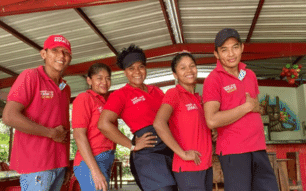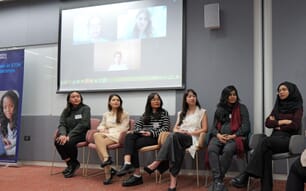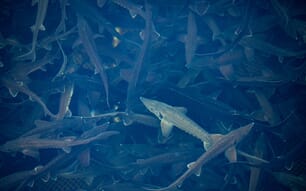Briefly describe your aquaculture career
My professional background is in agricultural economics, specialising in trade agreements, commodity trade and markets. As an economist in the Fisheries and Aquaculture Department of FAO, one of my focus areas was seafood certification. In this role, I contributed to the development of an evaluation framework for benchmarking aquaculture certification schemes to the FAO guidelines. I also represented FAO in a multi-stakeholder initiative organised by a number of private companies, NGOs and the German government to develop a tool for benchmarking both fisheries and aquaculture certification schemes againist the FAO guidelines and other international instruments.
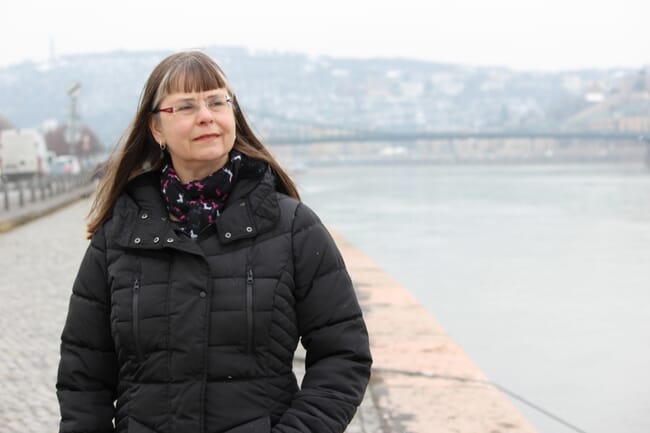
In June 2017, I moved from FAO headquarters in Rome to the FAO Regional Office for Europe and Central Asia (REU) in Budapest. In my new role, I serve as the Secretary of two FAO regional commissions. The mandate of the European Inland Fisheries and Aquaculture Advisory Commission (EIFAAC) is freshwater aquaculture and inland fisheries of Europe. Thus, my focus on aquaculture has broadened to examining the whole supply chain, including production issues such as supplies of affordable feed and fingerlings. EIFAAC is the only pan-European institution that addresses issues of freshwater aquaculture in Europe and plays a vital role in networking research and academic institutes in 34 member countries. In FAO’s role as secretariat, we provide a vital link between scientific research on aquaculture and the policymakers who can influence access to freshwater resources. As you may know, inland water bodies such as lakes and rivers have many competing uses – from hydroelectric generation, transportation, crop irrigation, flood control to aquaculture.
The other secretariat under my responsibility is the Central Asian and Caucasus Regional Fisheries and Aquaculture Commission (CACFish). The Members of CACFish also place priority on aquaculture development and require assistance in many aspects of fish production, in addition to the post-harvest issues of food safety regulations of international markets. Organising national and regional projects to address these needs, identifying funding sources, and coordinating with various actors and beneficiaries is both challenging and rewarding.
Issues of low fish consumption in Central and Eastern Europe and Central Asia, as well as the perceived differences between wild caught and farmed fish held by many consumers, requires significant awareness-raising. Improved market uptake of farmed fish can attract investment to freshwater aquaculture, affecting livelihoods of small farmers and contributing to rural development, as well as youth employment. Fish is a nutritious source of food, and food security is an important objective of our work at FAO. I feel my current focus on development of freshwater aquaculture in European and Central Asian countries has potential to make a real impact on regional and global food security.
What inspired you to start in aquaculture?
My path came through my interest in fisheries certification to promote sustainable production and combat illegal, unreported and unregulated (IUU) fishing. It was a logical path to become interested in aquaculture certification. Member governments have raised concerns to FAO that certification schemes widely accepted in European and North American markets are potentially technical barriers to trade for developing country fish exports. As 60 percent of fish in international trade comes from developing countries, it was an interesting question, namely how could data-poor and small-scale fishers and farmers in developing countries use eco-labels as a path to market access? For aquaculture, one answer has been cluster certification.
Raising salmonids or sturgeon, which rely on wild stocks for fishmeal, is an expensive and potentially unsustainable way to produce fish for human consumption. Feed for herbivorous species such as carp, on the other hand, is less expensive and can be produced on the farm.
Describe a typical day in your current role
As Secretary of two FAO regional commissions, I organise committee meetings and sessions for the member countries. This is my primary role. Secondly, we have technical cooperation projects at regional and country level for improving the fisheries and aquaculture sector in the region. This requires extensive travel and supervision of expert consultants to carry out the work of research and capacity building in the beneficiary countries. One example of a recent project completed last year is the installation by FAO of a water recirculation system for a sturgeon farmer in Armenia. Through this FAO project the farmer learned how to use the new aquaculture system to conserve water and increase productivity. Currently, the Armenian government is using this farm as an example to train other farmers.
What’s the most interesting, inspirational experience you’ve had working in aquaculture to date?
Participating in the Global Sustainable Seafood Initiative (GSSI). It was amazing to contribute to such a challenging endeavour, driven by a widely diverse group of stakeholders, each with competing interests and all focused on a common goal to improve transparency in seafood trade and markets. The tool was launched in October 2015 and several certification schemes have completed the benchmarking.
What’s the most unusual experience you’ve had in aquaculture?
While visiting a sturgeon farm in Eastern Europe, our host kindly offered us a taste of the farm’s premier product, caviar. Caviar is something I had never eaten before and I imagine it takes some getting used to.
How important are sustainability concerns to you and how do you address them in your work?
Sustainability is at the core of FAO work. FAO staff directly address the issues of sustainable production in agriculture, forestry and fisheries sectors to ensure nutrition and food security for all. My work has focused on promoting sustainable fish production through trade measures such as traceability systems, international standards, and certification. Market access is a tool currently used by the major fish importing markets to encourage sustainable fishing and fish farming practices in developing countries. My work is to assist these producers and their governments in meeting the new market requirements that could block trade and negatively impact their livelihoods.
What new technical or product innovation do you think has the most potential to change aquaculture?
My expertise is in post-harvest, thus my focus is on standards and certification. These are vital for ensuring consumer uptake of farmed products that reduce pressure on oceans and produce lower levels of harmful CO2 gas emissions than raising livestock.
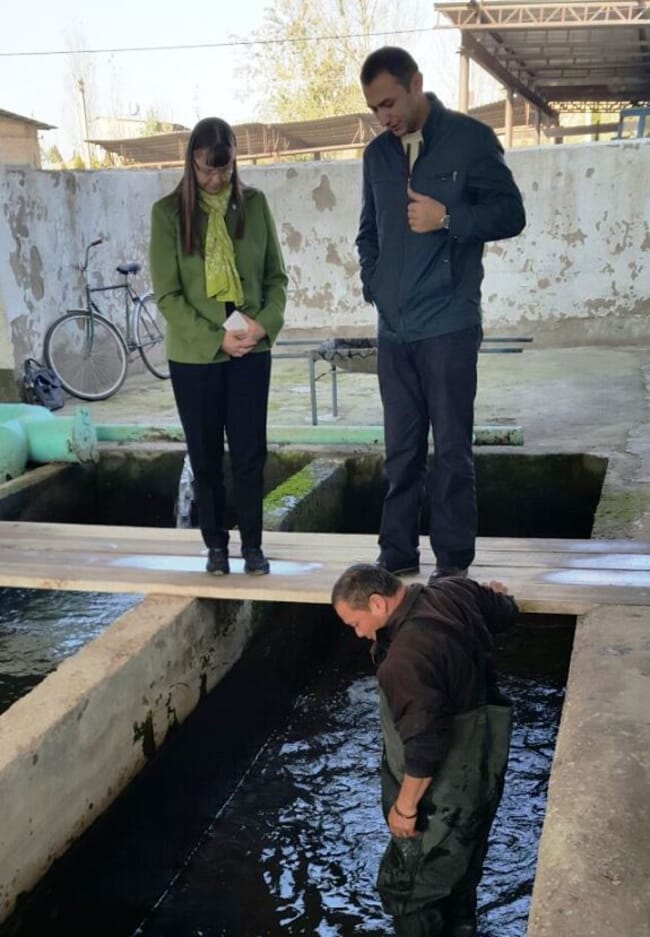
Are there any individuals or organisations in aquaculture who you’ve found particularly inspirational?
Dr Rohana Subasinghe, who was head of the aquaculture branch of FAO when I was working in Rome, was inspirational in his passion for aquaculture and was generous in sharing his vast technical knowledge. Rohana also appointed me as an editor of the FAO aquaculture newsletter, which contributed to my knowledge of the sector.
Have you faced any particular challenges as a woman in aquaculture?
No. As a professional from an intergovernmental organisation, I have been well-received by companies, fish farmers, civil society and government officials.
How are women addressing inequalities in aquaculture in your region and have you seen the opportunities improve in recent years?
Women are active in fish farming in Europe and Central Asia, especially on the small-scale farms, as it is often the women who feed the fish. However, I think that women still face barriers as entrepreneurs and have less access to resources then male farmers in many countries of this region. This is especially true when starting a medium-sized commercial fish farm, where a bank loan may be required.
Education is the key to modernising aquaculture production. Young women should look into aquaculture as a viable career option and focus their studies accordingly.
What advice would you give to women looking to start a career in the aquaculture sector?
Education is the key to modernising aquaculture production. Young women should look into aquaculture as a viable career option and focus their studies accordingly.
What would be your dream role in aquaculture and do you think it’s realistic to achieve?
I would like to facilitate more acceptance and participation in farmer and fisher associations in the Balkans, Caucasus and Central Asian countries. Historically, producer associations have not evolved in these regions and they could lead to improved socio-economic conditions and higher farm productivity.
What has been the aquaculture industry’s greatest accomplishment in recent years?
We see a trend towards research and investment in fish farming in a more environmentally friendly way and using species with better feed-conversion ratios. For example, raising salmonids or sturgeon, which rely on wild stocks for fishmeal, is an expensive and potentially unsustainable way to produce fish for human consumption. Feed for herbivorous species such as carp, on the other hand, is less expensive and can be produced on the farm. Thus, the final product is more affordable for domestic consumers and can contribute to overall food security and nutrition in developing countries.
What outstanding challenge would you most like to solve?
Raising awareness and influencing the behaviour of consumers on the health benefits of farmed fish, and the importance of choosing sustainably-produced products that will ensure fish is on the menu for future generations.


